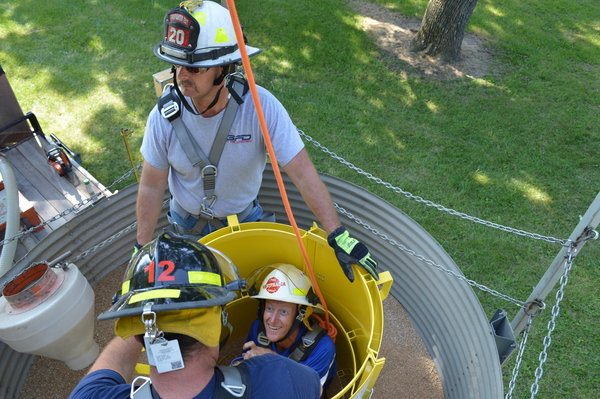Farmers have and continue to be a staple of the U.S. economy,whether it's the traditional family farms or larger,corporate-owned enterprises. Regardless of their structure, farmersface a wide array of risks and need the right type ofcoverage.
|For Nationwide, providing farmers with insurance is partof its history. In 1909, a group of Iowa farmers created FarmlandInsurance to protect against losses from fires in their grainelevators. A similar group of Ohio farmers came together in 1926for car insurance. Dubbed the Ohio Farm Bureau, it would laterchange its name to Nationwide in 1955. Finally, in 1982, FarmlandInsurance joined Nationwide.
Times are changing for farmers
In the simplest terms, Nationwide is insuring the output, inputand the farmer, says Nationwide's associate vice president ofagribusiness risk management Steve Simmons.
|Nationwide's agribusiness is a property & casualty insurancecompany, part of Nationwide Mutual. Their primary lines of businessinclude property, general liability, auto and workers'compensation.
|Notably, they do not insure crops from drought or weather, oranimal-related diseases like bird flu or mad cow. Simmons saysthese risks have a ripple effect in agribusiness “foragribusinesses who provide inputs, rely on outputs and services forthem such as sales in fertilizer and service, farm equipment,animal feed mixing and sales, availability of grain, meatprocessing.”
|As long as farmers have farmed, a chance of fire has always beena risk. Areas like the Midwest are especially prone to fire due tothe dry air. But fires can strike in a multitude of ways, oftenthrough unforeseen circumstances such as a lightningstrike.
|According to Simmons, farmers dealing with livestock —poultry and hog confinements, particularly — are at greater risk offire due to the number of fans running and the electricity producedas a result. The fans are used for circulation and exhaust and runat all times to keep livestock from asphyxiation.
|The use of drones may come to aid farmers to identify varioustypes of risks. Simmons speculated drone use could occur next year.Through its aerial vantage point, drones can provide thermalimaging and insights into developing risks. Imaging can show whereswitches are, which fans are running hot, and which areas are needof a replaced fan or motor — all to the benefit of farmers,especially those dealing with livestock.
|Related: Do you need insurance for yourdrone?
|'A call to action'
Farmers enter their grain bins for a variety of reasons, but themost common reason tends to be that the grain has gone out ofcondition and will not flow out of the unloading auger. Unaware ofthe ”bridges” beneath the surface — grain spaces that can't support them — thefarmer will sink into the grain and become trapped. Depending ongrain levels, the farmer can become completely engulfed in grainunable to breathe.
|The number of incidents of trapped farmers was enough forNationwide to invest in preventative measures. The grain rescuetube was born as a result. According to Paul Stevenson,Nationwide's senior risk management consultant, the grain rescuetube drops around the trapped farmer and removes the grain.
|
A local fire department trains responders to use a grainrescue tube. (Photo: Courtesy of Nationwide)
|Stevenson views Grain Bin Safety Week as a call to action, justone way to get ahead of these scenarios and keep farmers safe.Nationwide now partners with fire departments across the country toprovide training on how to get the tube in, get the grain out andrescue the trapped individual.
|Despite it all, Stevenson knows farmers will continue to entergrain cylinders. Since its inception in 2014, Grain Bin SafetyWeek was born as a result to focus on educating farmers onwhat steps they can take. During the week of February 18-24, 2018,Nationwide will continue to work with firefighters to rescuefarmers trapped in grain bins across the country.
|The biggest take away from Grain Bin Safety Week according toStevenson? Keep out of grain bins!
|Related: Farmers plagued by crop-killing herbicide Dicambanot covered for losses, says Risk ManagementAgency
Want to continue reading?
Become a Free PropertyCasualty360 Digital Reader
Your access to unlimited PropertyCasualty360 content isn’t changing.
Once you are an ALM digital member, you’ll receive:
- All PropertyCasualty360.com news coverage, best practices, and in-depth analysis.
- Educational webcasts, resources from industry leaders, and informative newsletters.
- Other award-winning websites including BenefitsPRO.com and ThinkAdvisor.com.
Already have an account? Sign In
© 2024 ALM Global, LLC, All Rights Reserved. Request academic re-use from www.copyright.com. All other uses, submit a request to [email protected]. For more information visit Asset & Logo Licensing.








